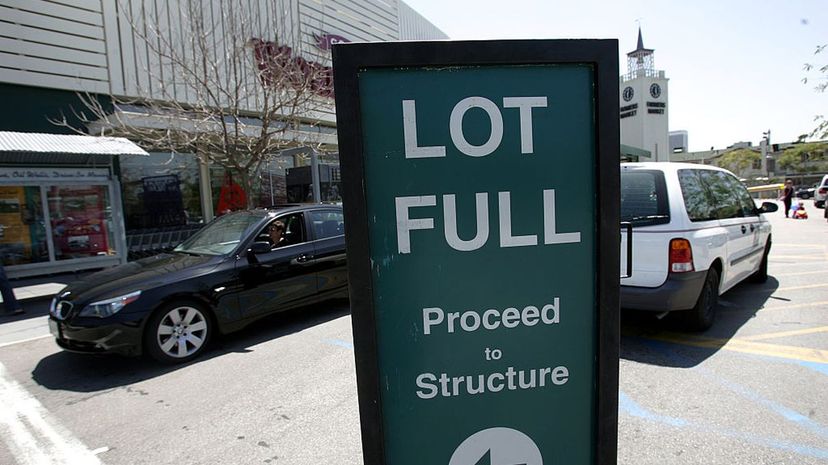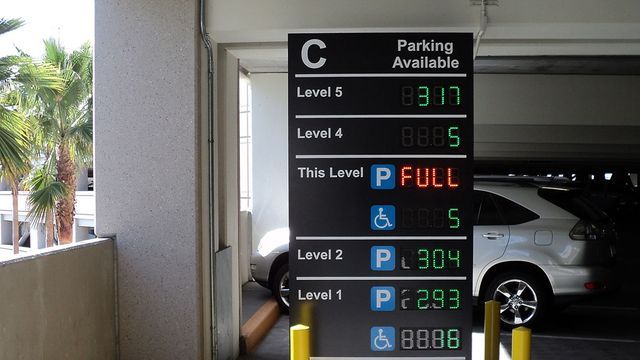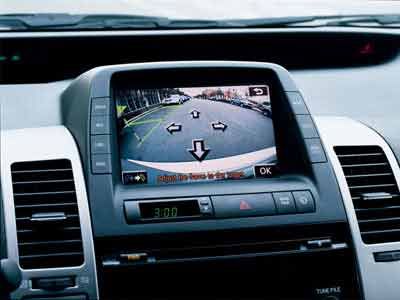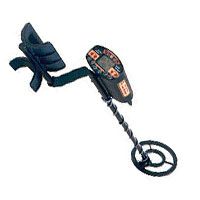
Your flight takes off in 45 minutes and you're just pulling into the airport parking garage. Yes, you should have left earlier, but there's nothing you can do about that now. Your only hope is to find an open parking space quickly and start hauling for the gate.
You're in luck. The airport has one of those new-fangled "space available" systems that tell you exactly how many open spaces are left on each level of the garage. There are lots of red "full" signs, but it says there are seven spots still left on the roof. If you stretch the 5 mph (8 kph) speed limit, you might just make it.
Advertisement
Screeching around turn after turn, you finally arrive on the top level. But where's your space? There it is! No, it's a motorcycle. Oh, there's one! "Compact only?" Come on! Meanwhile, you're getting honks from the cars lining up behind you and cursing that lying "space available" sign. You look at the clock — 31 minutes to takeoff.
Welcome to parking garage hell.
Even though more parking garages have upgraded to automated car-counting systems, some of the busiest lots seem to suffer from inaccurate tallies. Actually it's the customers who suffer, teased into a dead-end corner of the lot with promises of open spaces, only to be forced to execute a 39-point turn and retreat in failure.
To understand how parking garage counting systems work — and why they often don't work — we spoke with Dale Fowler, company director of Indect USA, a division of an Austrian firm that designs and installs advanced parking guidance systems for airports, hospitals, malls and casinos around the world. His company's bread and butter is a single-space system that mounts a sensor over every single parking spot in the garage and indicates open spaces with easy-to-spot green LED lights.
At a cost of between $300 and $500 per parking space, depending on local labor costs, the Indect system requires a serious investment. One of the company's first high-profile clients was the Dubai Mall (15,000 parking spaces). In the United States, Indect has installed single-space sensor systems for the City of Beverly Hills, Colorado State University, the John Wayne Airport and the Dallas/Fort Worth International Airport.

Since every space is fitted with its own ultrasonic sensor, and every sensor is 99.9-percent accurate, Fowler says, customers can be confident that "seven available spaces" means seven available spaces.
But older parking garages are more likely to be using induction loop sensing technology. That's been around for 50 years and is prone to some counting errors. Induction loops are coils of wire that are cemented under the road surface at the entrance and exit of a parking garage. They work like a metal detector — just the same way one would work at the beach if you were looking for jewelry. In this case, the loop registers disturbances in the coil's electrical field caused by metal objects large enough to be a car.
Parking garages will place a pair of induction loops at the entrance — one to trigger the ticket box and gate, and one to confirm the direction that the vehicle is traveling. The same two-loop system is used at the exit, to raise and lower the bar as a car leaves. The most basic system will count the number of vehicles coming and going and keep a running tally of how many spots are still available. More advanced systems will place additional loops throughout the garage to monitor space availability by level.
The problem with induction loops, says Fowler, is when a garage gets really busy and cars start to tailgate.
"Vehicles bunch up and three cars become one car," Fowler says. Even though each induction loop sensor is 99-percent accurate, those rare mistakes can start to add up. "In a high-use garage, it's a numbers game. The more turnover, the more cars run over each sensor. And the more sensors there are, the greater chance of inaccuracies. If each car generates eight to 10 sensor events, the total accuracy rate drops from 99 percent to 90 percent."
As a parking customer, it's hard to tell from the outside if a garage relies on old-school induction loop technology or one of the newer car-counting solutions, like Indect's single-space sensors, or something like RedStorm from Signal-Tech, which uses infrared sensors to track vehicle movement throughout the garage.
So take those "space available" numbers with a grain of salt. And for Pete's sake, leave earlier for the airport next time.
Advertisement


